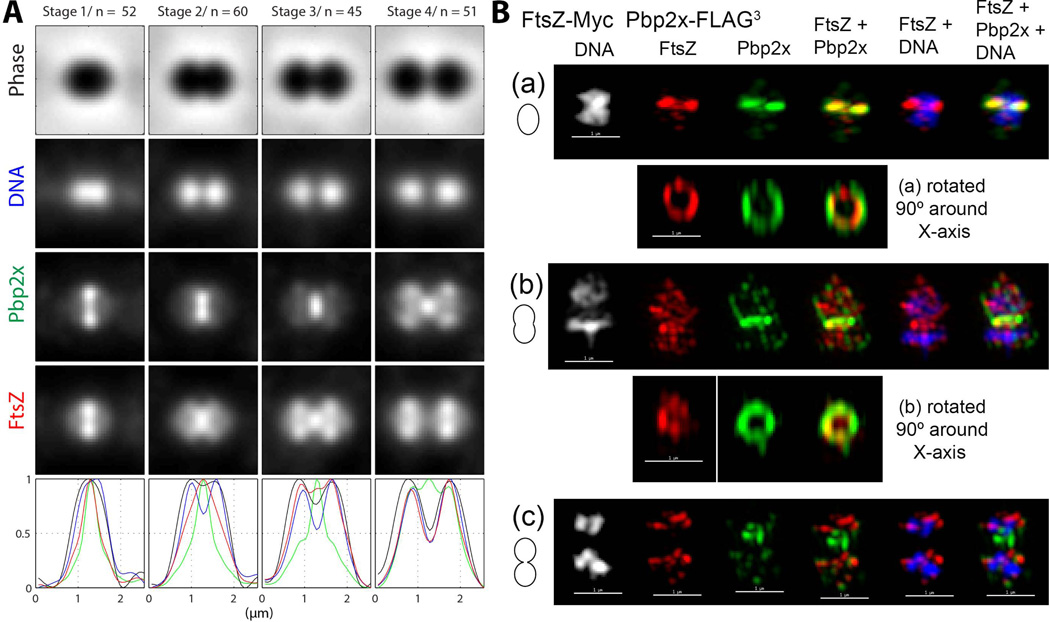Fig. 4.
Pbp2x remains at division septa after most FtsZ has migrated to equators of daughter cells. (A) Averaged images and fluorescence intensity traces of strain IU6978 (ftsZ-Myc pbp2x-FLAG3) grown to mid-exponential phase in BHI broth and processed for dual-protein 2D IFM and DAPI labeling (see Experimental procedures). Cells from two independent biological replicates were sorted into division stages and images were averaged and intensity traces graphed as described for Figure 3A and in Experimental procedures, except that row 3 and green color correspond to Pbp2x. (B) Representative 3D-SIM IFM and DAPI images of strain IU6978 at different division stages (scale bar = 1 µm). Pseudo-coloring is similar to Figure 3B, except green corresponds to Pbp2x. Cartoons at the left of images again depict stage of cell division. (a) First row; transverse section of a pre-divisional cell corresponding to Stage 1 in A showing co-localization of FtsZ and Pbp2x. Second row; a section from the midcell containing FtsZ and Pbp2x was selected and rotated around the X-axis to show that the FtsZ ring is smaller and concentric with the Pbp2x ring (see text and Movie S2). (b) First, row; mid-divisional cells corresponding to Stage 3 in A. Second row, a section from the midcell region containing the Pbp2x ring was selected and rotated around the X-axis to show a nearly constricted FtsZ ring. (c) Traverse section of a late-divisional cell corresponding to Stage 4 in A showing that Pbp2x remains at septa after FtsZ has migrated to equators of daughter cells. Images shown are representative of >30 examined cells in different division stages from two biological replicates.

